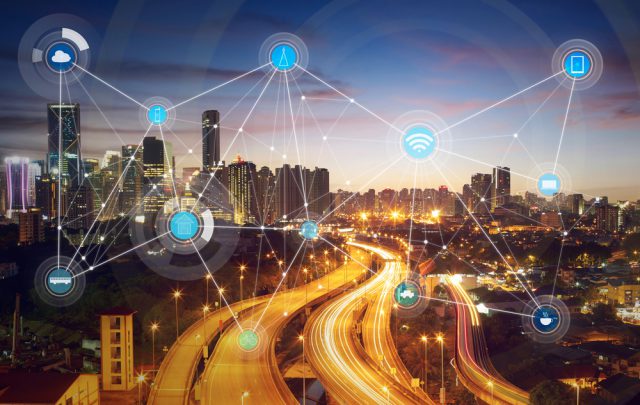How a 0G network can make smart cities using IoT that much smarter

The IoT has the power to unleash the smart city, providing data-backed insights that can be used to inform sustainability initiatives, enhance operations and influence municipal planning and budgeting. However, the potential of this technology is currently capped by a few critical barriers -- namely, security and cost.
To capitalize on insights derived from the IoT and truly become "smart," resource-strapped cities need a solution that 1) requires lower upfront investment than traditional options, and 2) ensures top-notch security. What is that solution? It could be a 0G network.
What is a 0G network?
A 0G network is a dedicated, low-bandwidth wireless network that is specifically designed to connect simple, low-powered and low-cost IoT devices to the Internet. Without complex connections or SIM cards, IoT devices can rely on a 0G network to send and receive small messages -- messages that, despite their size, enable the vast majority of IoT applications today.
Most importantly for cities, a 0G network fosters IoT applications that are:
- Cost-efficient: Because of the simplicity of a 0G network, cities can avoid IoT solutions that require SIM cards, which can cost up to $40 each. Rather, by connecting IoT devices to a 0G network that allows the transmission of small amounts of data over long ranges, smart city stakeholders can secure the IoT-enabled insights they need to steer decisions and operations -- and at a significantly lower cost than traditional network options.
- Inherently secure: 0G networks do not enable traditional two-way communication sessions; rather, once the IoT device sends the data to the base station, it goes into sleep-mode. This creates an extremely small window during which hackers can break into the network and take control of the device. As such, devices connected to a 0G network are not beholden to it and therefore significantly less susceptible to network attacks.
Plus, a 0G network can mitigate the occurrence of Distributed Denial of Service (DDoS) attacks, through which devices are captured and manipulated, sending so many messages that the network becomes overwhelmed and shuts down. Radio frequency jammers can simulate these attacks. However, because of the randomness of its data transmissions, a 0G network is almost impossible to jam; to do so would require extremely high-power levels and significant investment.
By addressing cities’ cost and security concerns about the IoT, 0G networks present a gateway to new IoT-enabled insights that can steer strategic, modern municipal operations and programs.
How Smart Cities are using 0G today
Already, cities around the world are leveraging 0G networks to tap into insights from IoT solutions. For instance, in Spain, IoT devices connected to a 0G network and attached to streetlights are helping local governments optimize their energy consumption, automate predictive maintenance and improve lighting quality. In England, 0G-connected IoT solutions are being used to alert home and building owners to leaks, tempering the impact of water damage. In Denmark, IoT solutions connected to a 0G network signal when trash bins are full so garbage can be collected more efficiently -- resulting in cleaner, healthier urban environments.
Mikkel Daa Hansen, formerly of IoT Denmark, remarks, "Looking at data that we can produce with 0G, I am quite amazed with what we can do with 12 bytes… there is no doubt that this is the tip of the iceberg because there are so many use case scenarios we haven’t thought of yet."
How the 0G can help cities become even smarter
As more cities look to 0G networks to enable cost-efficient, secure IoT applications, we can expect even greater innovation. Some historic urban areas might consider using 0G-connected sensors to help monitor the structural integrity of old bridges, buildings or tunnels -- getting ahead of deformation by identifying solutions that can ensure civilian safety and convenience.
Other cities might consider using IoT solutions connected to a 0G network to detect gunshots. By attaching 0G-connected sensors -- equipped with a special microphone -- to existing infrastructure, cities can better track gunshot location and dispatch police to the scene.
The opportunities IoT devices present to smart cities are boundless. And by connecting these devices to a 0G network, cities can ensure security and cost-efficiency with their IoT investments -- making them that much smarter.
Photo Credit: jamesteohart/Shutterstock
Florian Splendido is head of Sigfox IoT Agency
